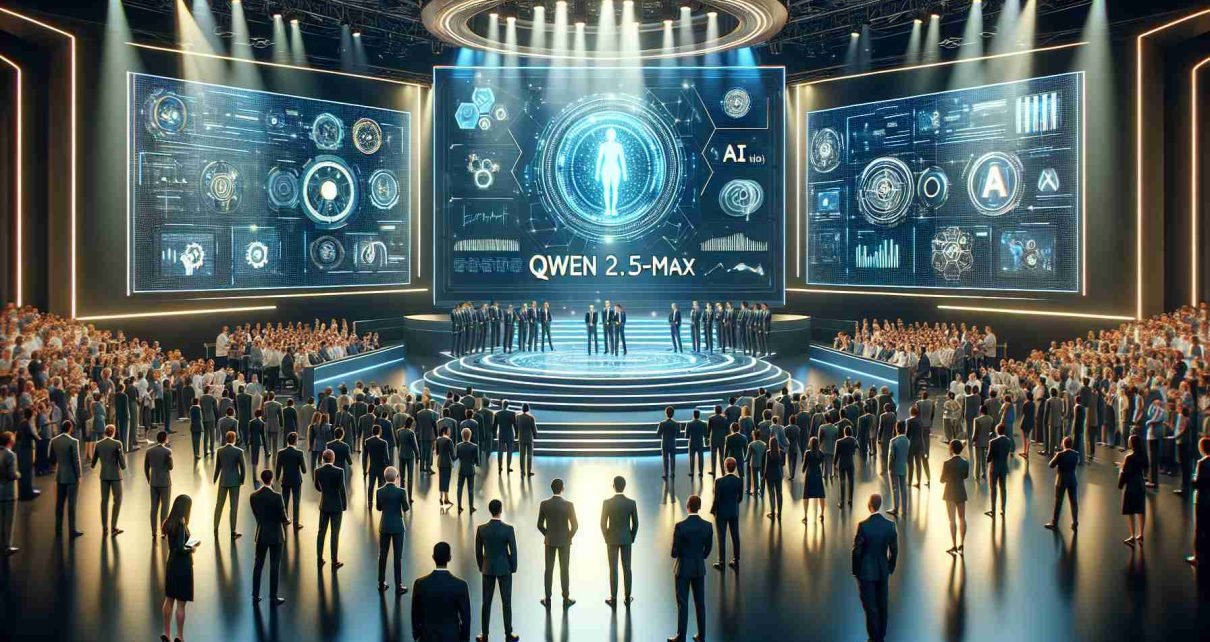Introduction to AI Competition
The competition between China and the USA in the realm of artificial intelligence (AI) has intensified in recent years, signifying a pivotal moment in technological advancement and global dynamics. As AI continues to permeate various sectors, its significance becomes evident not only in economic terms but also in matters of national security. Both nations recognize that leadership in AI technology can translate into substantial geopolitical advantages, prompting a race to develop and deploy AI solutions across numerous applications.
In this context, AI is not merely an innovative tool; it represents a transformative force that can redefine industries, enhance productivity, and drive economic growth. The capabilities offered by AI—including machine learning, natural language processing, and computer vision—are being leveraged to improve efficiencies and decision-making processes at unprecedented scales. As countries adopt AI technologies, they are simultaneously cultivating the potential for increased influence over global markets and technological standards.
Moreover, the implications of achieving supremacy in AI extend beyond economic benefits. National security has emerged as a foremost concern, with AI-driven technologies increasingly integral to defense strategies, surveillance, and cyber capabilities. The ability to harness advanced AI systems can significantly bolster a nation’s strategic posture, making it imperative for countries to invest heavily in research and development to maintain a competitive edge.
Amidst this backdrop, the motivations driving both China and the USA’s pursuit of AI dominance are multifaceted—spanning economic ambition, security considerations, and the desire for global leadership in technological innovation. As we delve into the remarkable technologies emerging from these nations, it is crucial to explore how entities like DeepSeek contribute to this ongoing rivalry, shaping the landscape of AI development and implementation.
Overview of DeepSeek
DeepSeek has emerged as a significant player in the artificial intelligence (AI) landscape, focusing on innovation and research that align with China’s broader technological ambitions. Founded in 2020, DeepSeek was established by a team of experienced professionals and researchers aiming to push the boundaries of AI applications. The organization’s inception was rooted in the recognition of the pivotal role AI plays in global markets and the necessity for China to remain competitive in this rapidly evolving sector.
DeepSeek’s technological innovations span various fields, including natural language processing (NLP), computer vision, and machine learning. These focus areas have allowed the company to develop solutions that not only enhance operational efficiency but also address real-world challenges. One notable achievement is their NLP platform, which has been instrumental in improving cross-lingual communication and sentiment analysis for businesses, showcasing DeepSeek’s capacity to merge advanced AI techniques with practical applications.
In addition to technological advancements, DeepSeek emphasizes fostering local talent by partnering with universities and research institutions. This initiative aims to cultivate a skilled workforce capable of contributing to the nation’s ambitious goals in AI research and application. Furthermore, the organization aligns its research initiatives with national priorities, such as advancements in healthcare AI, smart city technologies, and sustainable development.
Through its commitment to innovation, collaboration, and education, DeepSeek positions itself as a unique entity in the AI space. By contributing to the growth of industry standards and conducting cutting-edge research, it aims to play a crucial role in propelling China forward in the global AI race, driving both economic and technological progress.
China’s AI Strategy and DeepSeek’s Role
China has emerged as a major player in the global artificial intelligence (AI) arena, driven by a comprehensive national strategy that prioritizes AI as a key component of economic and technological advancement. The Chinese government has implemented various policies aimed at fostering innovation while ensuring that AI development aligns with national interests. One of the foundational documents is the “New Generation Artificial Intelligence Development Plan,” released in 2017, which sets ambitious goals for AI capabilities and outlines a vision to become a global leader by 2030. This strategic framework not only bolsters research and development but also emphasizes the importance of AI in various sectors such as healthcare, transportation, and manufacturing.
To back this strategy, the Chinese government has committed substantial funding and resources towards AI initiatives. Billions of dollars have been allocated for research and development, which is being distributed across universities, research institutions, and high-tech enterprises. The focus on establishing AI research parks and innovation hubs further underscores the investment in infrastructure that facilitates collaboration and knowledge-sharing among various stakeholders. This coordinated effort is essential for nurturing a vibrant AI ecosystem that catalyzes innovation.
Within this context, DeepSeek plays a significant role as a developer and provider of advanced AI solutions. The company aligns its operations with the national agenda to enhance China’s AI capabilities through data analysis and machine learning technology. DeepSeek engages in multiple projects that contribute to the advancement of AI applications, such as natural language processing and computer vision. By leveraging their expertise, DeepSeek helps to fulfill the government’s vision of driving forward AI initiatives, thereby reinforcing China’s commitment to becoming a global leader in this critical technology sector.
USA’s Approach to AI and Industry Dynamics
The United States has long been at the forefront of technological innovation, with artificial intelligence (AI) representing one of the most significant arenas of competition in the modern-day landscape. The approach to AI within the USA has predominantly been characterized by a robust private sector leadership that fosters an innovation ecosystem integrating various stakeholders, including startups, academic institutions, and multinational corporations. This multifaceted collaboration is pivotal in driving advancements in AI technology.
Within the private sector, major tech giants such as Google, Microsoft, and Amazon are investing heavily in AI research and development. These companies are not only enhancing their AI capabilities but are also creating a competitive environment that encourages the emergence of startups. The presence of numerous venture capital firms focusing on AI startups highlights the dynamic nature of this sector, providing the necessary funding and mentorship to promising new ventures. This influx of talent and resources cultivates an innovative atmosphere where breakthroughs in AI can be rapidly developed and brought to market.
Academic institutions also play a vital role in shaping the AI landscape in the USA. Top universities engage in cutting-edge research and contribute significantly to the advancement of AI technologies. The collaboration between academia and industry is evidenced through partnerships that enable the transfer of knowledge, technologies, and skilled graduates into the workforce. Furthermore, government initiatives aimed at fostering AI research—including funding programs and public-private partnerships—enhance this collaborative spirit, ensuring a comprehensive and unified approach to AI development.
One such emerging player within this competitive framework is DeepSeek, a company that exemplifies how startups can challenge established entities. By leveraging innovative methodologies and technologies, DeepSeek not only contributes to the national AI landscape but also poses questions regarding operational efficiencies and collaborations within the industry. This interaction among stakeholders is essential for maintaining the United States’ competitive edge in the global AI arena.
Technological Innovations and Advancements
The race for supremacy in artificial intelligence (AI) technology has intensified in recent years, with both China and the USA pushing boundaries through innovative approaches and novel solutions. In this competitive landscape, DeepSeek has emerged as a key player, contributing significantly to AI advancements particularly in data processing and machine learning capabilities. Discussions surrounding AI innovation often highlight DeepSeek’s pioneering efforts in deep learning algorithms and their application in various sectors such as healthcare, finance, and transportation. These technologies enable more accurate predictions and facilitate improved decision-making, thus showcasing DeepSeek’s essential role in the broader context of AI development.
In comparison, US companies such as Google and Microsoft maintain substantial investments in AI research and development. Noteworthy innovations, including advanced natural language processing and cloud-based AI solutions, have propelled these firms to the forefront of the technological race. The emphasis on creating robust AI frameworks by these companies aligns with the goals of enhancing efficiency across diverse applications. Additionally, many US organizations collaborate with academic institutions to drive research, garnering a competitive edge in obtaining relevant intellectual capital.
The contrasting approaches of China and the USA can also be observed in their regulatory frameworks surrounding AI innovation. While the US tends to support a more decentralized and open ecosystem fostering entrepreneurship, China’s government adopts a strategic role, encouraging top-down initiatives to advance AI technology rapidly. Within this context, DeepSeek has taken advantage of the unique dynamics of both environments, optimizing its innovations to fit various market needs. Furthermore, the cross-pollination of ideas and technologies between these two global giants has led to a fertile ground for growth in AI, proving essential for the future trajectory of technological innovations.
Impacts on Global AI Ethics and Standards
The competition between China and the USA in artificial intelligence (AI) has far-reaching implications for global ethics and standards surrounding AI development and implementation. As both nations invest heavily in AI technologies, the divergent approaches to governance, ethical considerations, and regulatory frameworks raise critical questions about the future of responsibility in AI use. Organizations like DeepSeek are at the forefront of this crucial landscape, attempting to navigate these ethical waters while contributing to an international dialogue on responsible AI practices.
In China, the rapid advancement of AI technologies is closely tied to governmental oversight and social stability, often prioritizing state interests over individual rights. This can lead to ethical dilemmas regarding data privacy, surveillance, and autonomy. Conversely, the USA generally emphasizes ethical principles rooted in personal freedom and corporate responsibility, leading to different priorities regarding transparency and user consent. These conflicting philosophies engender a complex environment for global AI ethics where organizations like DeepSeek must respond appropriately to multiple ethical standards.
DeepSeek is notable for actively engaging in the discussion of responsible AI, promoting ethical guidelines that seek to harmonize differing global standards. They aim to mitigate risks associated with AI misuse while advocating for fairness and accountability. By establishing a framework that integrates diverse ethical perspectives, DeepSeek illustrates the potential for collaborative global efforts in shaping AI governance.
Moreover, as the AI race intensifies, international collaboration and standard-setting bodies are critical in creating a unified ethical compass for AI usage. The engagement of organizations like DeepSeek is essential in fostering discussions aimed at reconciling different ethical viewpoints, ultimately shaping international policies that govern AI development. This dynamic interaction between competition and collaboration will play a pivotal role in determining the ethical landscape of AI on a global scale.
Challenges and Controversies Surrounding DeepSeek
As DeepSeek advances in the competitive landscape of artificial intelligence, it faces a multitude of challenges and controversies that have significant implications for its operations and reputation. A key issue lies in the realm of transparency. Many stakeholders, including governments and consumers, demand clarity on how AI systems are developed and deployed. DeepSeek, operating at the juncture of innovative technology and extensive data usage, must navigate these expectations while ensuring its proprietary methodologies remain safeguarded.
Data privacy emerges as another pressing concern. With stringent regulations being imposed globally, particularly in regions like Europe and the United States, DeepSeek is tasked with ensuring compliance without compromising its technological edge. The collection and utilization of personal data can lead to conflicts with user privacy rights, which can harm public trust in AI developments. As such, the company must adopt robust data governance practices while remaining agile in responding to evolving legal landscapes.
International relations and geopolitical tensions further complicate DeepSeek’s position. The growing rivalry between China and the USA in AI technology creates a backdrop where collaborations are scrutinized through the lens of national security. Both nations are cautious of technology transfer and the implications that arise from it. These dynamics can raise questions about DeepSeek’s partnerships, particularly with foreign entities, and how these relationships could affect its reputation both domestically and internationally.
Public perception plays a crucial role as well. With increasing awareness of ethical concerns surrounding AI, including potential bias and misuse, DeepSeek must proactively engage with communities to foster a positive image. Addressing fears and misconceptions about its projects and collaborations is vital to gaining public support, ensuring that its advancements are seen as beneficial rather than threatening.
Future Outlook of AI Competition
The competition between China and the USA in the realm of artificial intelligence (AI) is expected to evolve significantly in the coming years. Companies like DeepSeek are poised to play pivotal roles in shaping this landscape through innovative technologies and strategic initiatives. As both nations invest heavily in AI research and development, various trends are emerging that may dictate the trajectory of this rivalry.
One potential area for growth is in the field of natural language processing (NLP). Companies such as DeepSeek are exploring advanced algorithms that enhance comprehension and generation capabilities, which could foster more intuitive human-machine interactions. This development is crucial as businesses and governments progressively adopt AI applications across different sectors, aiming for efficiencies and improved decision-making processes.
Furthermore, the rise of edge computing will likely alter AI capabilities, allowing for faster processing of data closer to its origin. Companies like DeepSeek could capitalize on this trend by developing AI systems that operate more effectively in decentralized environments. This shift not only aids in real-time data analysis but also enhances privacy and security in sensitive applications, areas where user trust remains paramount.
Forecasts indicate that advancements in AI will not only enhance economic productivity but also position countries as global leaders in technology. The innovative prowess of companies like DeepSeek is essential for maintaining competitive advantages in AI development, as both China and the USA aim to dominate in various technological sectors. The implications of these changes are profound, shaping not only the future of technology but also international relations.
Ultimately, the interplay of these factors will define the future of AI competition. Continuous evolution in capabilities, strategic partnerships, and government policies will influence which nation and companies emerge as leaders in this crucial domain.
Conclusion and Key Takeaways
The competition between China and the USA in the realm of artificial intelligence (AI) has emerged as a focal point of global technological advancement, influencing various sectors such as healthcare, finance, and transportation. Throughout our discussion, we explored how each nation approaches AI development, revealing not only strategic advantages but also potential challenges. The capabilities of companies like DeepSeek are increasingly vital in this landscape, as they leverage their innovative technologies to contribute to advancements in AI that could redefine how organizations operate.
One significant observation from this ongoing rivalry is how both China and the USA prioritize investment in research and development. China’s state-driven model allows for rapid mobilization of resources towards AI initiatives, securing an extensive talent pool and infrastructure. Conversely, the USA benefits from a robust ecosystem of private enterprises and universities, fostering creativity and innovation. This dichotomy highlights the potentials of each approach and underscores the necessity for continuous evolution in strategies to maintain global competitiveness.
Moreover, DeepSeek encapsulates the essential attributes that define success in AI. With its focus on deep learning and data analytics, the company stands as a testament to how specialized technology firms can play a crucial role in enhancing AI capabilities. By enabling businesses to harness large data sets effectively, DeepSeek not only contributes to local markets but also strengthens the broader AI landscape. The outcomes of this competition will not solely affect national interests; the ripple effects will resonate globally, influencing economies and shaping the dynamics of technology access for consumers.
In conclusion, the race between China and the USA in AI is not just about technological superiority; it is about setting the terms for a future increasingly reliant on advanced technologies. As we witness the unfolding developments in this sector, the importance of strategic partnerships, like those formed with companies such as DeepSeek, will be essential for driving innovation and ensuring sustainable growth. The future landscape of AI promises both opportunities and challenges that must be navigated thoughtfully by all stakeholders involved.






